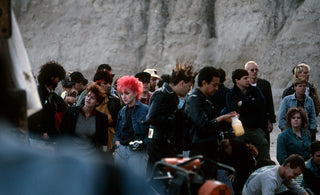During the early portion of the 1980s, there was no other punk scene in America larger than the one percolating in Los Angeles. Through a unique combination of commercial radio stations like KROQ having local acts like The Adolescents and Black Flag in heavy rotation, and large venues such as Olympic Auditorium and Perkins Palace holding shows that attracted numbers in the thousands, the city had a much different situation than the rest of the punk scenes around the country.
The only crimp to be found in this surging environment was the constant harassment from the city’s police force, which was then helmed by its infamous and tyrannical chief, Daryl Gates. “Things were definitely blowing up,” remembers Stuart Swezey, an L.A. native entrenched in the punk scene at the time. “But at the same time, it was getting hard to actually see these bands due to the tension between the punk rock community and the LAPD.” These pitched battles between the cops and punks became unwelcomed regular occurrences at shows, with the former coming out the obvious victor every time. It was existing under this ceaseless threat of Reagan era state oppression which led 20-year-old Swezey and a collective of fellow punks and ne’er-do-wells to put on a series of shows miles away from where any cop could crack a punk’s skull: the Mojave desert.
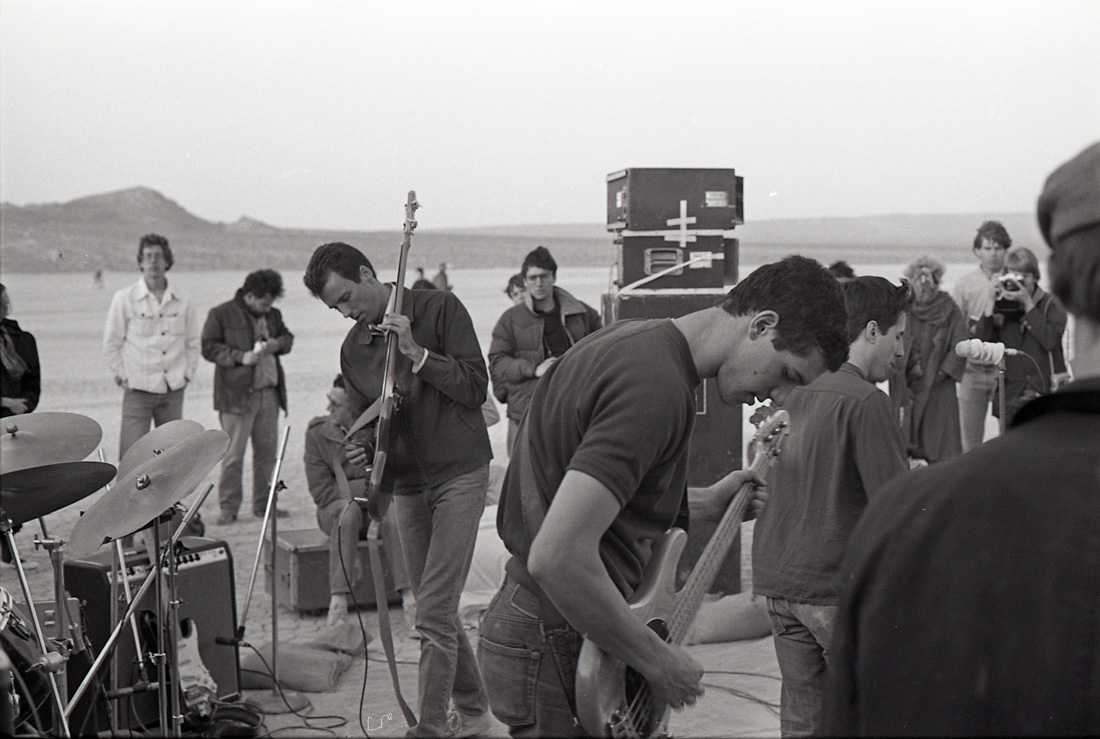
Initially, Stuart began booking shows which floated among the lofts and warehouses in the then-ghost town of downtown L.A. under the appropriate title of Desolation Center. “I liked the idea of doing shows downtown to be under the radar of the cops, but what I really had in mind was to get away from the vibe of these night clubs on the Sunset Strip like The Whisky A Go-Go and The Roxy,” declares Swezey. “It was just too Rock ‘N’ Roll for me and I wanted to work with spaces that were blank slates.” Even though these gigs were going down well off the worn path of Hollywood, it still didn’t prevent Los Angeles’s finest from stepping in and wreaking havoc as usual. “I can’t remember getting through one gig I put on that didn’t end with police issues,” recalls Stuart. “Sooner or later, they’d show up and shut things down. That was a given. People would scatter and I was left to make sure the gear didn’t get impounded by the cops. It was the frustration with all of that which led me in another direction to put on shows.”
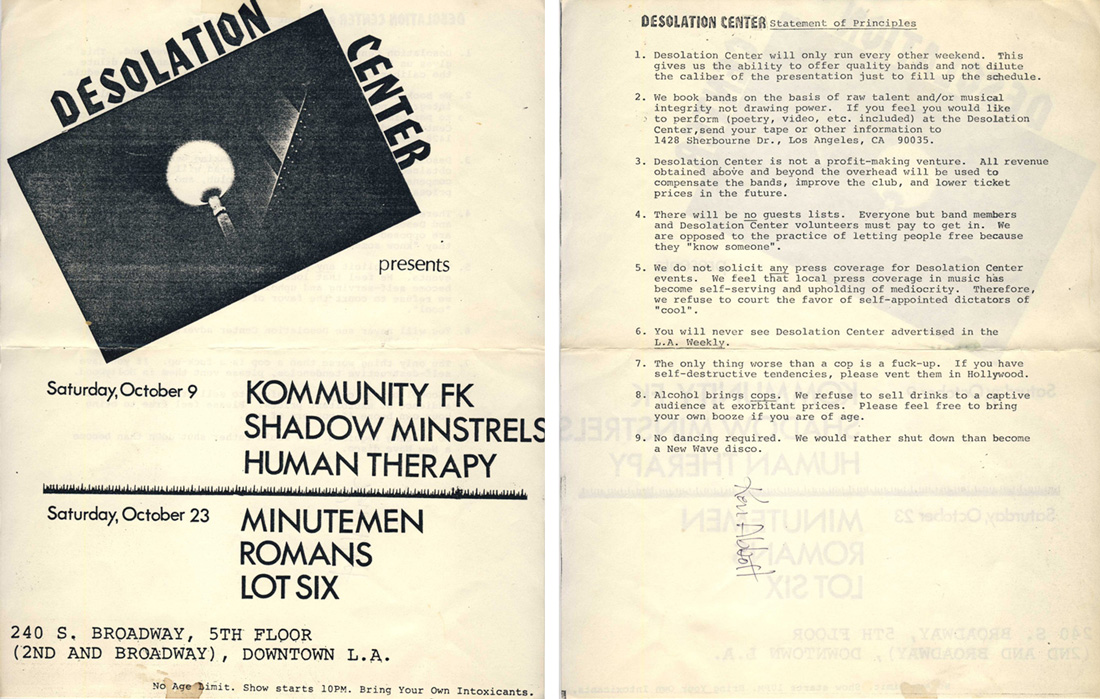
On a road trip through northern Mexico in early 1983, Sweezey whiled away the time staring out the window at the Sonoran Desert and listening to cassettes of some of his favorite releases—ones that pushed the sonic boundaries of punk, such as Public Image Limited’s Second Edition, Wire’s 154, and Tragic Features, the debut release from local experimental punkers Savage Republic. “Their music felt right for that setting since it was this mix of Spaghetti Western soundtracks and Arabic music,” says Swezey. “The combination of the music with the emptiness of this otherworldly landscape made me wonder what it would be like to see this kind of music performed in this environment. How uniquely Californian would it be to have a show in the desert? You couldn’t do that in New York.” Envisioning the perfect location for an event the LAPD couldn’t bust up if they tried, Stuart cold called the band’s guitarist Bruce Licher and proposed the idea of throwing a Savage Republic gig in the relatively close Mojave Desert.
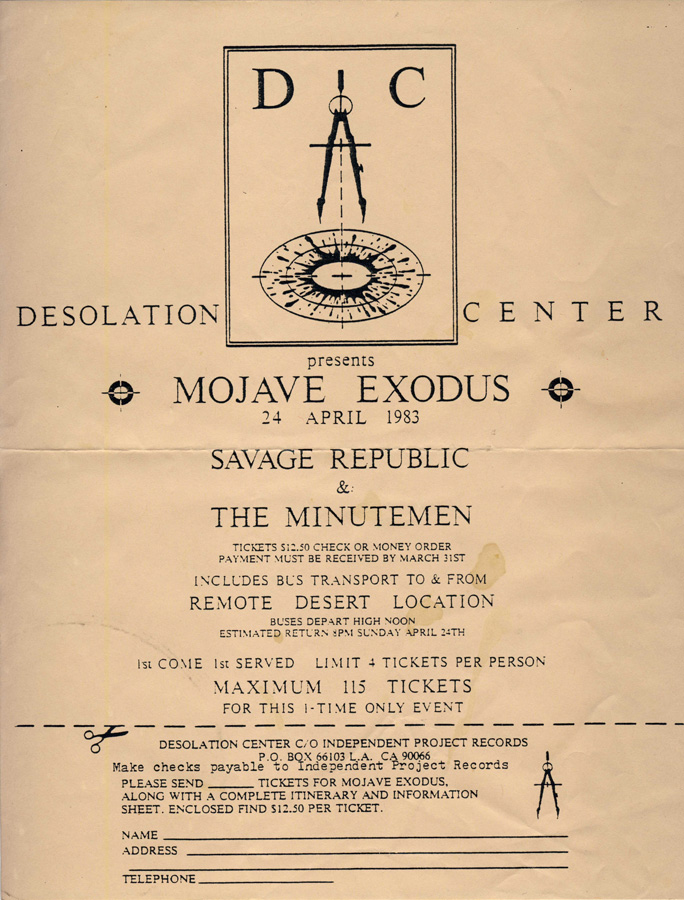
Mojave Exodus flyer, 1983.
“How uniquely Californian would it be to have a show in the desert?”
Licher not only jumped at the concept, but also suggested a location for the event: a dry lake bed where he had shot an avant-garde short film four years prior, titled 59 Ways To Leave Your Film. The thought of contacting the actual owner of this land to ask permission was considered, but the duo quickly decided it would be easier to just avoid that part of the equation and squat the land instead. Swezey decided to round off the bill with San Pedro’s resident blue-collar art punks The Minutemen, an act he had booked numerous times before. With the groups and locale squared away, it was now time for Stuart to figure how the hell he was going to get people out to this gig that was literally in the middle of nowhere. “It seemed weird to me for people to drive their cars out there,” says Swezey. “So I thought, ‘Hey, what if we just provide transportation in the cost of the ticket?’” So at noon on April 24, 1983, a gaggle of punks met in a Chinese restaurant parking lot in downtown L.A. where three hired school buses idled away, waiting to sweep them up and drive them three hours east into the Mojave. “Bruce and I liked the mystery the buses gave. These people didn’t know where they were going and just had to trust us.”
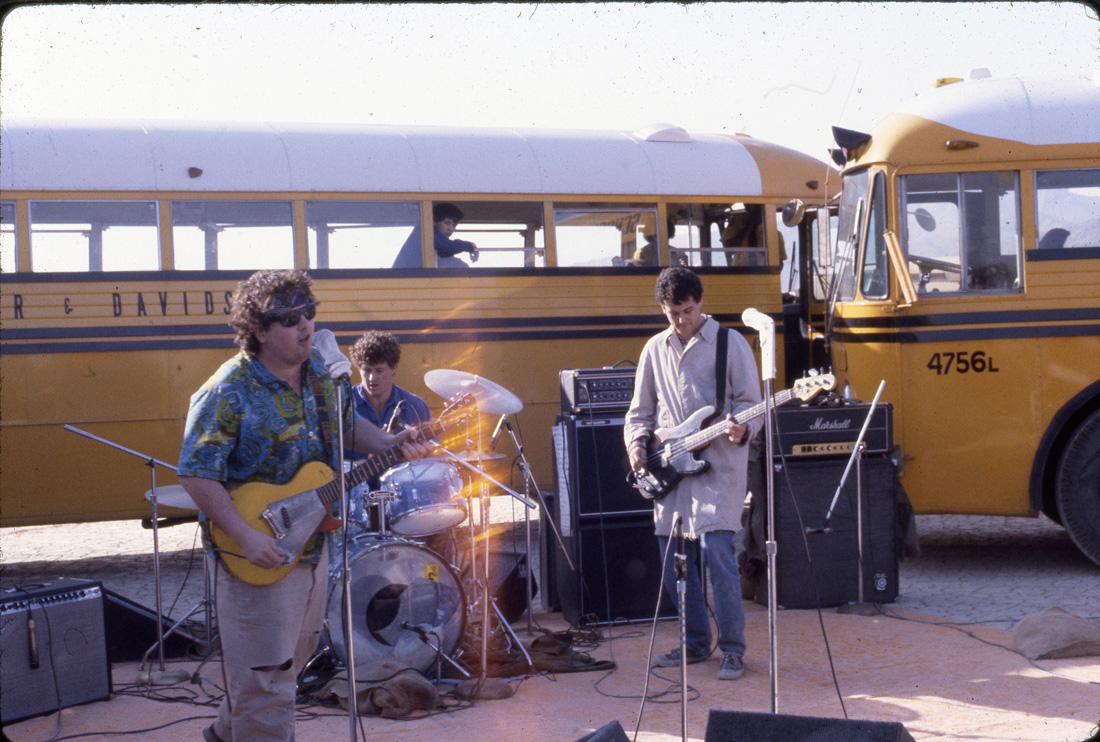
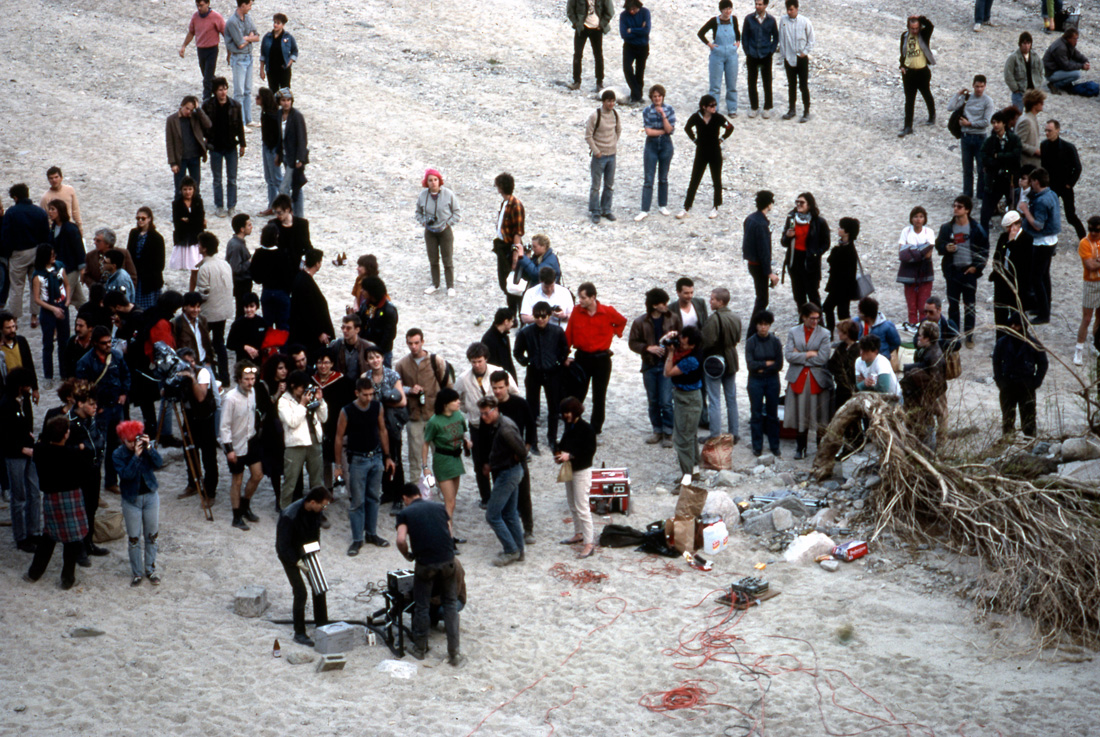
Once the show got rolling, small issues manifested themselves, but were promptly squashed by punk ingenuity. For example, when the desert wind began to kick up and become too powerful for the bands to withstand, the school buses were parked behind them to form a windbreak. And when that same wind started to blow through the microphones, someone volunteered their socks to cover them. Meanwhile, as the generator powering the P.A. began to run out of gas, Minutemen guitarist D.Boon was more than willing to lend his lips to siphon gas out of one of the buses to keep the party going. “I had a real feeling of accomplishment,” Stuart remembers. “It felt like the culmination for all the shows I had put on up until then. The best part was there were no bouncers, no cops, and no one fucking it up by fighting. The amount of freedom we all felt out there that day was great.”
Satisfied with a job well done, Swezey quit his job doing phone sales and backpacked across Europe to celebrate. While in West Berlin, he befriended members of the pioneering Industrial music group Einstürzende Neubauten and impetuously offered them a show in the desert if they ever found themselves on the West Coast. In late February 1984, when Stuart was safe and sound back in L.A., he actually received a phone call from the band. They were going to be out there in a week’s time and wanted to take Swezey up on his offer. “I was honored a band I thought was so amazing wanted to work with me, so I had to figure out a way to get it off the ground in a short amount of time.”
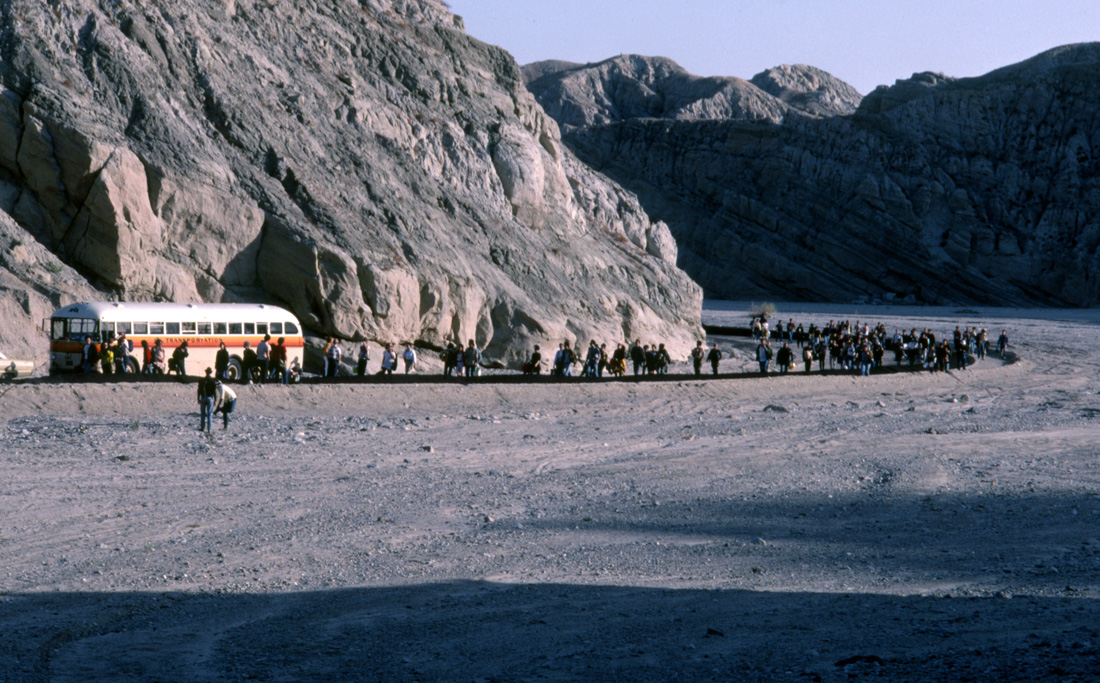
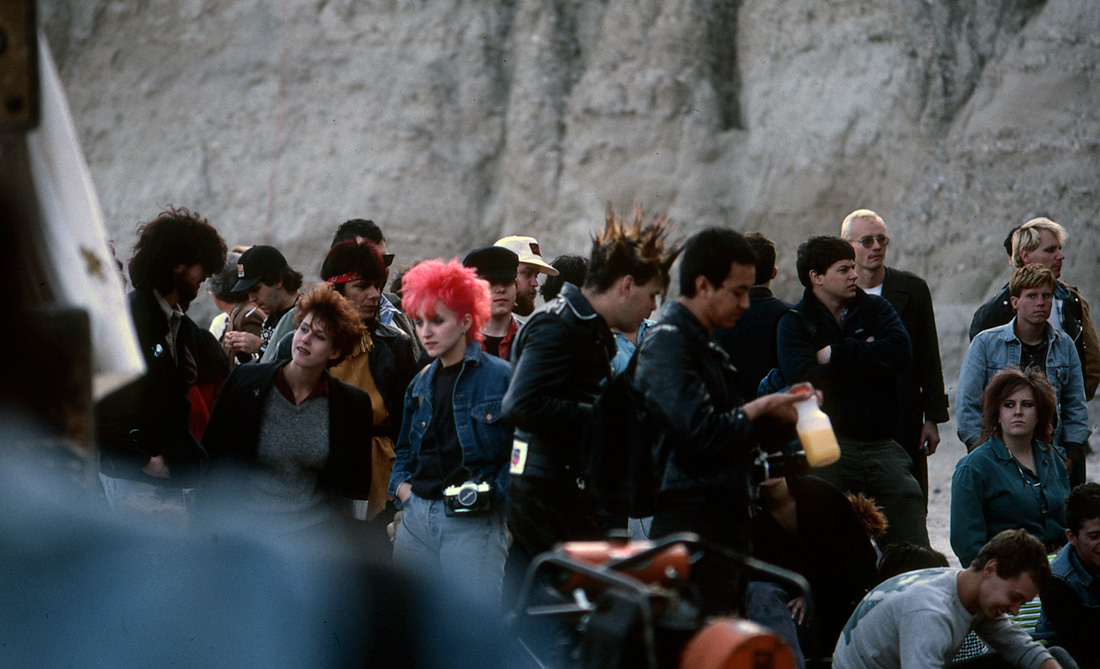
Swezey and Licher hopped in the car to scout another desert location and settled on a canyon near the fittingly named town of Mecca. Due to the buzz permeating around town over the previous show, tickets moved swiftly and it was immediately apparent twice as many school buses would be needed. “It was all happening so fast, but on such a larger scale than the first show,” Stuart remembers. At Neubauten’s suggestion, he booked noise artist Boyd Rice and the machine performance art collective Survival Research Laboratories as openers. Both took the trek down from their homebase in Northern California for the mere promise of gas money.
On Sunday March 4, 1984, when the buses arrived and everyone was settled in the canyon, Rice opened up the gig by lying on a bed of nails with a mic’d up cinderblock on his stomach which Einstürzende Neubauten bassist Alexander Hacke took repeated whacks at with a sledgehammer while the Survival Research people’s “set” consisted of setting off explosives in caves and blowing up abandoned household appliances found scattered around the desert.

By the time Neubauten was ready to perform, things were running way behind schedule, but that flukishly worked to Stuart’s advantage. “By that time, the sun was setting and bonfires were going, and what they were doing fit perfectly with the surroundings,” he reflects. Fresh from a gig the night before—opening for the British Goth band Specimen at Perkins Palace where they attempted to set fire to the stage—the cacophony the Germans conjured from borrowed power tools and pilfered sheet metal bounced throughout the canyon and took everyone into a trance-like state of primitive euphoria. Much like the previous gig, things went shockingly well, barring a pile of now-broken power tools that would have to be explained to the fathers of a gaggle of young punks.
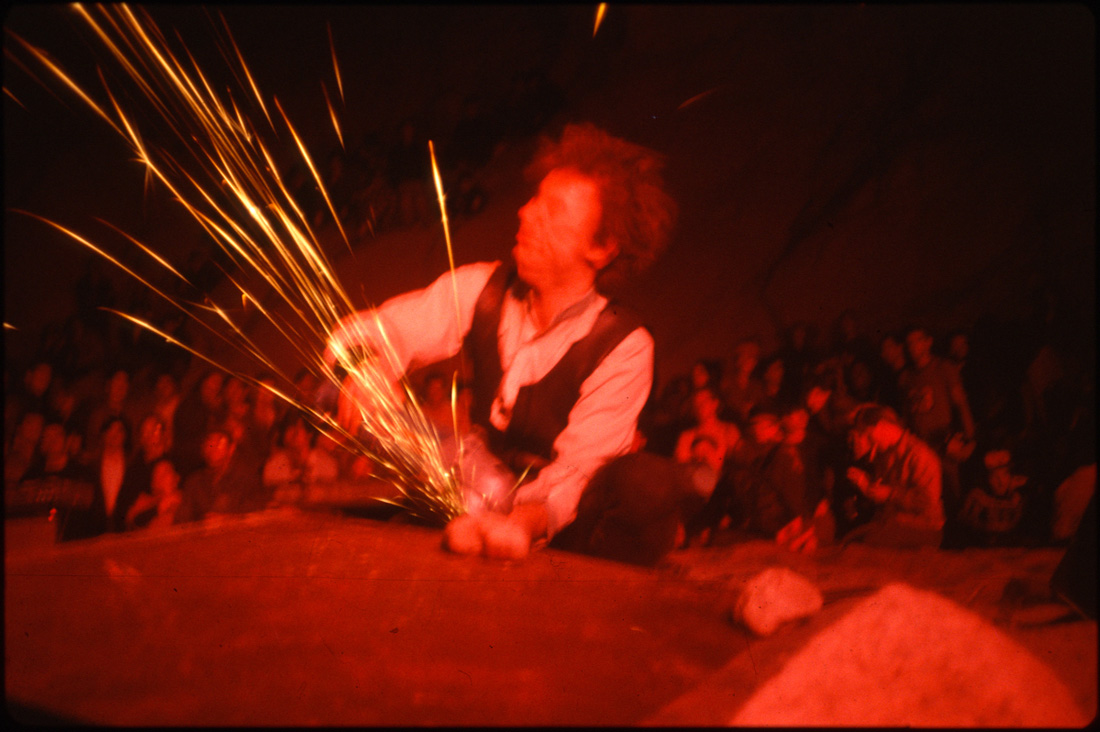
Unlike the initial desert gig, Stuart didn’t feel the need to recharge afterward; he wanted to get cracking on his next event. “I wanted to do something at a different location and take everyone off guard,” he says. “So what was the opposite of doing a show in the desert? Having one on the water.” Swezey frequented the keggers thrown by the Minutemen in the harbor town of San Pedro where they lived and the starkness of the waterfront there after dark spoke to him in the same way the desert did a year earlier. “There was a feeling of emptiness and not being a part of civilization, especially at night.” With this concept fresh in his mind, Swezey rented a whale watching boat. Making the Minutemen the obvious headliner with their pals from Arizona The Meat Puppets providing support, the show was booked for June 15th.
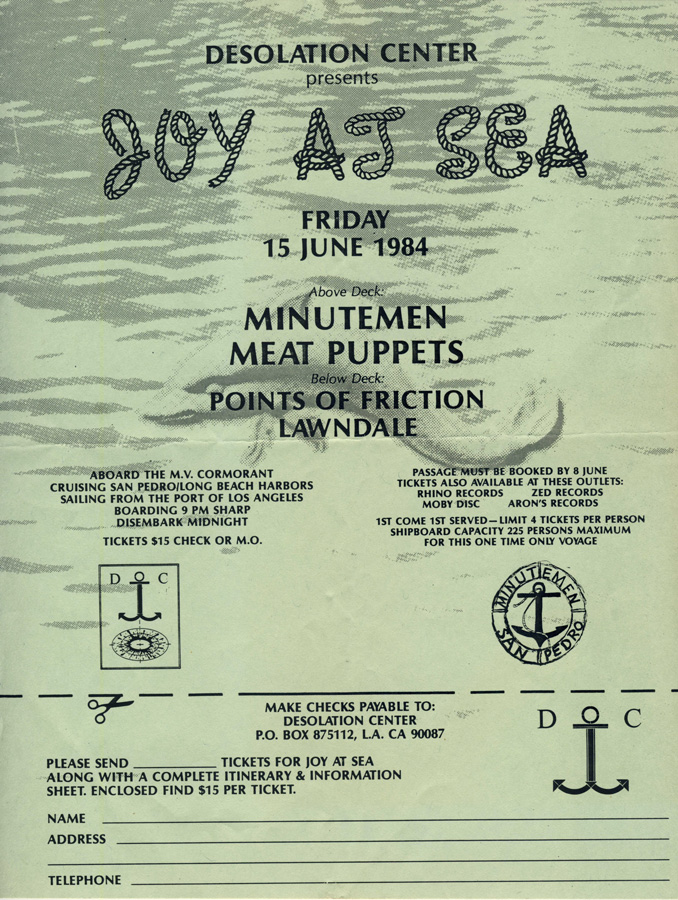
Stuart rented a whale watch boat for the Joy at Sea show, 1985.
When the tickets for the show went on sale at record stores around L.A., they sold out quickly, and when the M.V. Cormorant set sail at 9 PM that Friday night, it was packed to its 225 person capacity. The Minutemen premiered many songs from their upcoming and groundbreaking double LP Double Nickels On The Dime while the Meat Puppets perplexed and thrilled the throngs with their singular, desert-fried music which referenced everyone from Neil Young to The Fall, sometimes within the same song. “It was a wild crowd,” says Swezey playfully. “A lot of people I talk to today say they don’t remember anything about the show because they were so hammered that night, so we’re lucky no one fell overboard.”

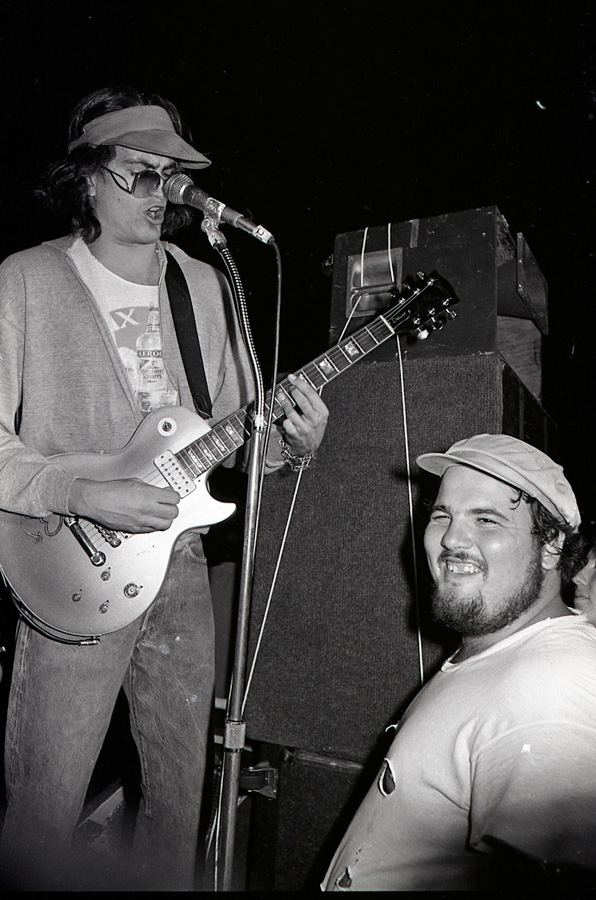
Curt Kirkwood of Meat Puppets and D.Boon of Minutemen at Joy at Sea, 1984. Photo by Ann Summa.
Another band Stuart got to know while in Berlin was New York City’s Sonic Youth, who were on their first tour of Europe. Later on, when guitarist Thurston Moore and bassist Kim Gordon came out west to visit the latter’s parents, Swezey and some others took them on an afternoon pilgrimage to Spahn Ranch, the primary headquarters for Charles Manson and his followers in the late ’60s. “We went there and met this random guy who showed us around and took us down into the caves where the Manson family had their photos taken for Life magazine. It was pretty crazy,” Stuart recalls. After the bond forged with that mind bending experience, plans were put into motion for Sonic Youth to play their California debut at a desert gig the next time the two came out to visit Gordon’s folks.
January 5, 1985, saw the stellar line-up of Sonic Youth, Meat Puppets, and L.A. punks-turned-glam rockers Redd Kross play what would be Swezey’s last desert gig, which was given the name of The Gila Monster Jamboree. Added to the bottom of the bill last minute was Psi Com, a goth rock band fronted by future Lollapalooza founder and Jane’s Addiction vocalist Perry Farrell. “At the time, Perry was my roommate and he was always involved in the previous shows in one capacity or another,” Stuart says. “Whether it was taking tickets or cleaning up, he was always willing to help. Putting Psi Com on the bill was just a friendly gesture towards him.”
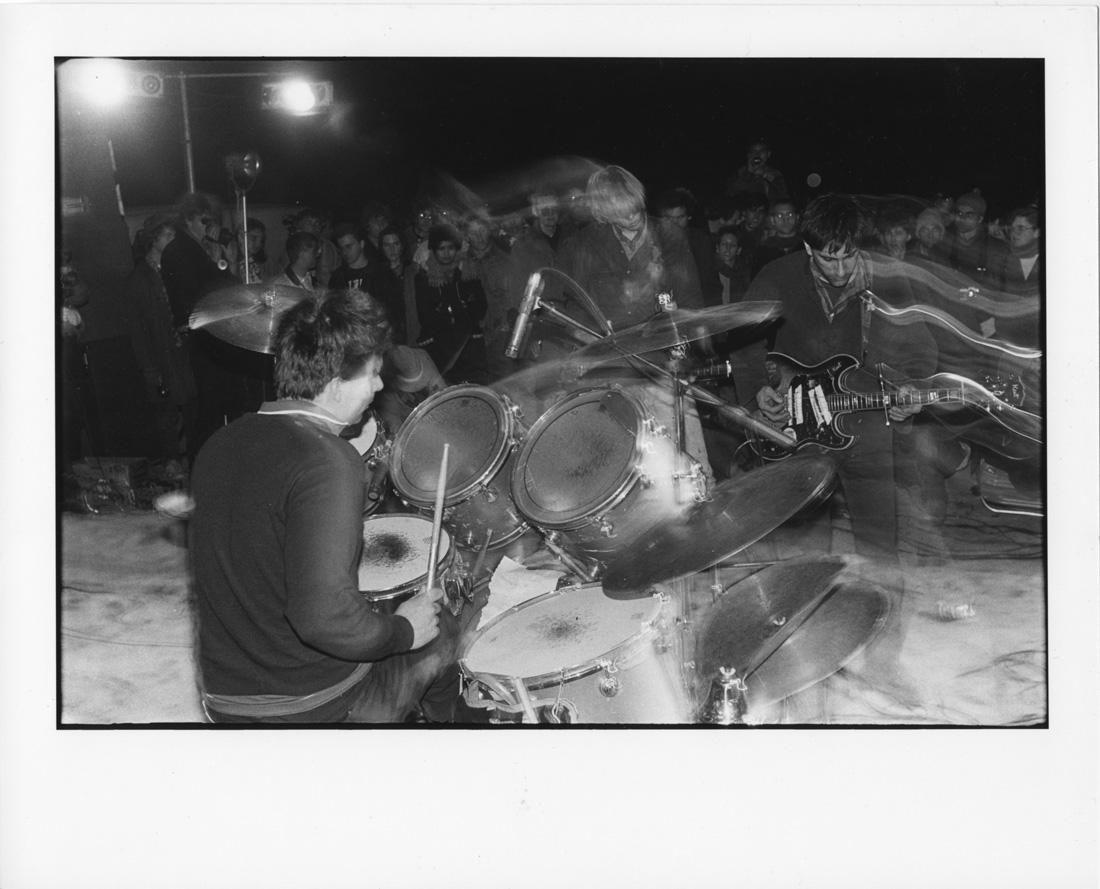
Minus Psi Com, the line-up was a perfect representation of where the American punk scene was heading at the mid point of the ’80s. Songs were getting longer and more complex, and artists weren’t afraid to show their pre-1977 influences anymore. Along with that came a re-evaluation of ’60s counterculture through a post-punk lens where books such as The Electric Kool-Aid Acid Test by Tom Wolfe, The Family by Ed Sanders and Fear and Loathing in Las Vegas by Hunter S. Thompson were being devoured. “There was something strangely liberating about not hating hippies anymore,” says Stuart before breaking into a case of the chuckles. “We didn’t necessarily want to be them, but to embrace elements of their philosophy was kind of cool.”
One element of hippie culture brought into the punk mix at the time was the use of LSD. A friend of Meat Puppets’ guitarist Curt Kirkwood had brought along an ample supply of the hallucinogenic to the Gila Monster Jamboree, which she gave out freely amongst the 500 or so attendees. Dave Markey, an eventual video director for Redd Kross, Meat Puppets, and Sonic Youth, was one of the tripping audience members, and he somehow remembers the gig very vividly. “There was a very intense communal psychedelic experience that went on that night. You kind of had to be there as any description of it would only make is sound corny,” says Markey, who aligns Swezey’s desert happenings with the Acid Tests thrown by author Ken Kesey twenty years earlier. “Both were underground, word-of-mouth events. You really had to be in the know to be there.” Considering Stuart had an almost entirely dosed up crowd on his hands, the show—much like the previous two—went down without a hitch.

Reeling from the high of another triumphant desert gig, Stuart went to check his P.O. box only to find a letter from the bureau of land management telling him he was up on federal charges of trespassing for the Gila Monster Jamboree. “I really thought I was in deep shit,” says Swezey glumly. “But they were very reasonable when I was willing to talk to them and not deny the charges.” When Swezey eventually met with the chief ranger, he was asked how many people attended and Stuart lowballed the amount to 200 from the estimated 500 who showed up. The ranger came to the verdict of fining him $400 for clean-up charges—very much a slap on the wrist compared to what he could have ended up paying. A benefit show with the always-down-to-help Minutemen was held and the funds for the fine were raised, but Sweezey felt he was truly lucky to get out of the charges so unscathed and decided to stop the desert gatherings for good this time. It seemed like his time promoting shows might be skidding to an end.
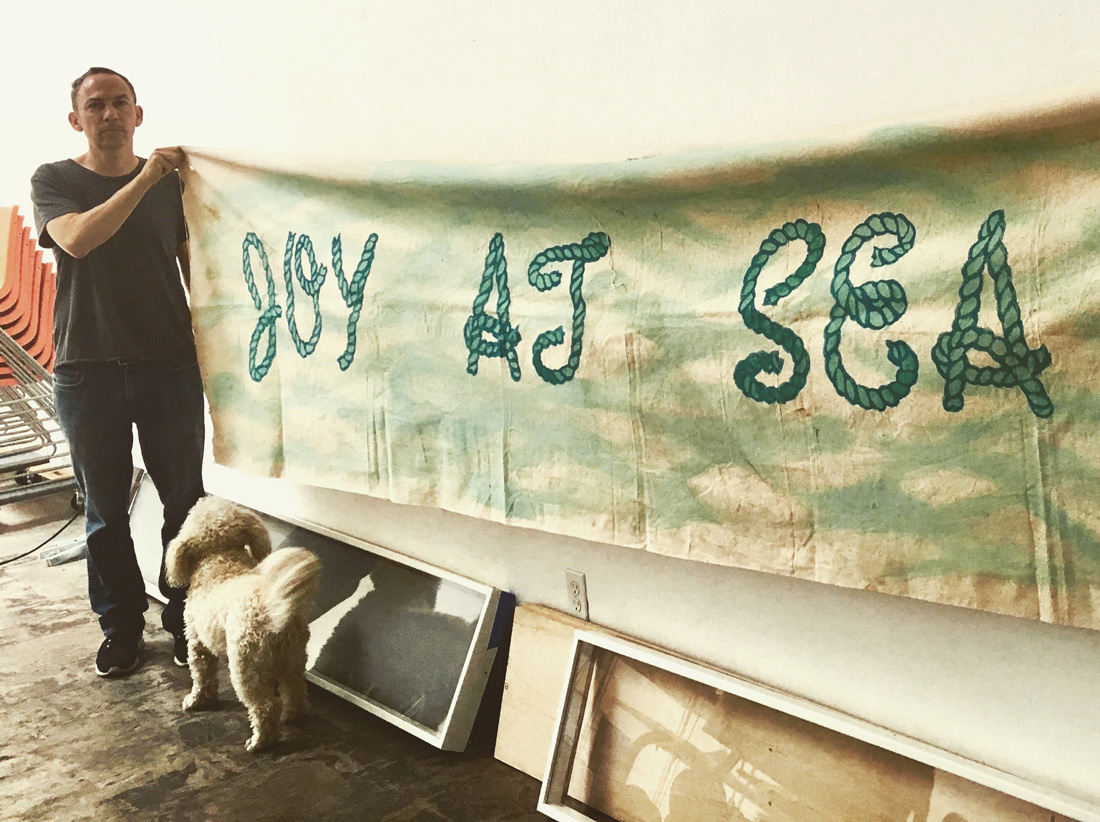
The definite conclusion to Stuart’s run of booking shows happened at a Sonic Youth show he was throwing in December of 1985 in downtown L.A. when the call came in that Minutemen guitarist D.Boon had been killed in an auto accident on a stretch of Arizona highway. “D.Boon and the Minutemen were such a huge part of what I was doing with Desolation Center that it felt wrong to keep going without him there,” says Swezey who shifted gears into the realm of book publishing soon after with his imprint, Amok Books.
Stuart has completed a documentary about his time running the Desolation Center which will be making the festival rounds later this year. Packed with interviews with both the artists who performed and the participants who absorbed their sounds, it is unlike many other punk documentaries about times past in that it does not stipulate off-the-grid, DIY events like Swezey’s as lost to the ages. “I encourage young people to watch the film and think up ways to approach creating their own events like the ones we did in the desert or in warehouses,” states Swezey sternly. “I feel like things have gotten so big and there’s nothing that makes something like Burning Man or Coachella better just because it attracts tens of thousands of people. You can go off anywhere in a small group and create something that’s all your own. If the outcome of this film is some young person doing something off the wall and weird to get outside of the everyday reality, then that’s a huge accomplishment.”
***
Donate to support the Desolation Center documentary now at desolationcenter.com.
Desolation Center is the untold story of Reagan-era guerrilla punk/industrial desert happenings in Southern California. Interviews and unseen footage of Sonic Youth, Minutemen, Meat Puppets, Swans, Redd Kross, Einstürzende Neubauten, SRL, Savage Republic and more. Contact: Info@desolationcenter.com.

